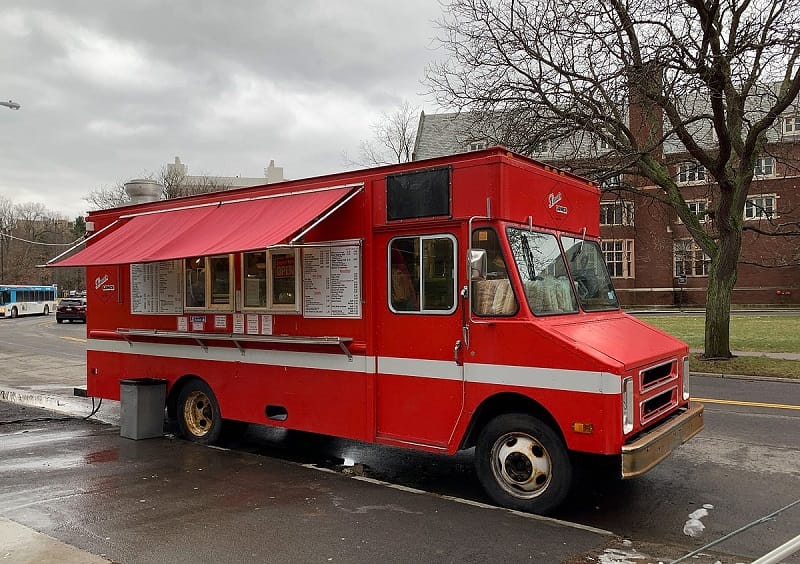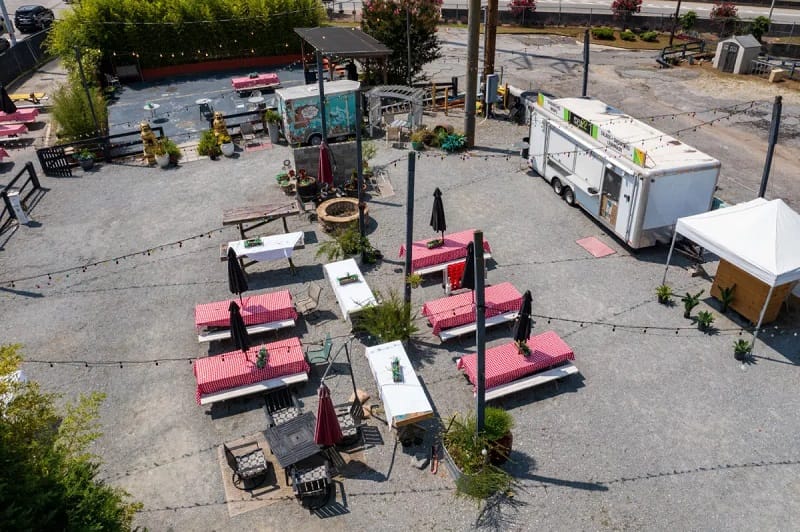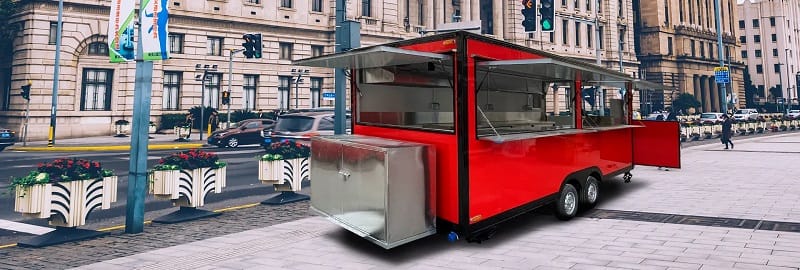This post contains affiliate links. This means I will make a commission at no extra cost to you should you click through and make a purchase [ “As an Amazon Associate, I earn from qualifying purchases.” ]. Read the full disclosure here.
Compact Food Trucks for Urban Area: The Smart Choice for City Vendors GuideMechanic.Com As the food truck industry continues to grow, one segment is rapidly gaining attention: compact food trucks for urban areas.
These smaller, space-efficient vehicles are perfectly suited for the tight streets, limited parking, and dense foot traffic found in major cities like New York, San Francisco, and Chicago.
Whether you’re starting a new food concept or expanding from a brick-and-mortar location, compact trucks offer a smart way to reach urban customers without the high overhead.
In this article, we’ll cover what makes compact food trucks ideal for cities, the most popular models, price ranges, and tips on selecting the right truck for your business.
See Also: Full-Size Food Trucks with Kitchen
Compact Food Trucks for Urban Area
Why Compact Food Trucks Work Best in the City

Urban areas are challenging environments for large trucks. Narrow streets, strict parking regulations, and limited vending zones make maneuverability a top priority. Here’s why compact food trucks excel in city environments:
- Easy to Park: Most compact trucks are under 20 feet long, allowing access to standard parking spaces and tighter vending spots.
- Better Fuel Efficiency: Smaller trucks burn less fuel—a significant advantage for daily urban operations.
- Lower Startup Cost: Compact food trucks cost less to purchase and outfit than larger step vans.
- Zoning Compliance: Many cities have restrictions on truck size in certain areas; compact trucks are more likely to meet those limits.
- Quick Setup and Operation: With a focused kitchen layout, compact trucks allow for faster service, which is essential in high-volume areas.
Ideal Use Cases for Compact Food Trucks
These trucks are best suited for urban food vendors that serve:
- Coffee and espresso drinks
- Sandwiches and wraps
- Tacos and small plate street food
- Smoothies, juices, and acai bowls
- Ice cream and frozen desserts
- Pre-packaged meals and grab-and-go snacks
Compact trucks can still deliver full service but typically feature a focused menu that doesn’t require oversized grills or large fryers.
Compact Food Trucks for Urban Area
Popular Compact Food Truck Models
Here are a few vehicle types often converted into compact food trucks for urban use:
- Nissan NV200: Known for its small footprint and efficient layout.
- Ford Transit Connect: Great cargo space and fuel economy.
- Mercedes Metris: Offers a touch of style and solid performance.
- Piaggio Ape or Tuk Tuk conversions: Highly maneuverable and eye-catching.
- Custom-built trailers (under 12 ft): For those with a tow vehicle and tight vending space.
These vehicles can be customized with refrigeration units, espresso machines, small cooktops, prep tables, sinks, and even full graphics wraps.
Price Table: Compact Food Trucks for Urban Areas
| Vehicle Type | Build Type | Features Included | Price Range (USD) |
|---|---|---|---|
| Nissan NV200 | 2014–2020 (converted) | Sink, fridge, prep counter | $18,000 – $28,000 |
| Ford Transit Connect | 2013–2019 (converted) | Espresso setup, cold storage | $22,000 – $32,000 |
| Mercedes Metris | 2016–2021 (converted) | Dual sinks, fridge, light cooking setup | $28,000 – $38,000 |
| Piaggio Ape (Custom) | 2010–2022 | Ice cream or coffee station, branded | $15,000 – $25,000 |
| Compact Trailer (10′) | 2020+ | Grill, cooler, sink, menu board | $12,000 – $20,000 |
| Food Bike or Cart | New or refurbished | Cold storage, dry storage, custom branding | $3,000 – $8,000 |
Note: Prices vary based on condition, build complexity, location, and equipment included.
Advantages of Going Compact

1. Lower Entry Costs
Compared to full-sized trucks that can cost $70,000 or more, many compact builds stay under $35,000—even fully equipped. This allows entrepreneurs to enter the food truck industry without massive upfront investment.
2. Simplified Licensing
In many cities, smaller vehicles require less permitting or meet more vending criteria. Some municipalities differentiate food truck size in their vending ordinances.
3. Lower Operating Expenses
From insurance and fuel to maintenance and repair, compact trucks tend to cost less to operate over time.
4. Creative Flexibility
Smaller trucks often push vendors to focus on niche products, which can improve branding and profitability.
What to Consider Before Buying
- Menu Fit
Does your menu require heavy cooking, or is it mostly cold prep and reheating? Compact trucks are better for low-heat menus or items that are partially prepped off-site.
- Permits and Zoning
Check your city’s food truck laws. Some cities restrict the size or type of vehicles allowed in certain areas or districts.
- Parking and Storage
A smaller truck is easier to store at home, in a garage, or in tight commissary lots.
- Electrical Needs
Compact trucks have limited space for large generators. Consider solar panels, smaller appliances, or lower-energy solutions to save space and stay efficient.
Compact Food Trucks for Urban Area
New vs. Used Compact Food Trucks
| Feature | New Build | Used Truck |
|---|---|---|
| Customization | Full design control | Limited to existing layout |
| Startup Time | 1–3 months to build | Ready to go sooner |
| Warranty | Often included | Usually none |
| Cost | Higher upfront | Lower purchase price |
| Maintenance | Minimal at first | May require upgrades or repairs |
A used truck can be a good deal if it’s well-maintained and built to code. However, custom-building a compact truck allows you to tailor the equipment to your exact needs.
Smart Setup Tips
- Streamline Your Menu
Compact trucks thrive on focused concepts. Stick to 4–6 core menu items for efficiency.
- Maximize Prep Space
Fold-down counters, multi-function appliances, and vertical storage help you make the most of limited square footage.
- Use a Commissary Kitchen
Many city vendors prep food off-site and use the truck only for finishing and serving.
- Invest in Branding
Since space is tight, clean visuals and professional signage are key to standing out in a busy city block.
Final Thoughts

If you’re looking to break into the food truck scene in a crowded metro area, a compact food truck may be the smartest move you can make. These vehicles offer a balance of affordability, maneuverability, and efficiency—perfect for urban food entrepreneurs.
With prices ranging from $12,000 to $35,000, and plenty of build options available, there’s a compact setup that can match your budget and culinary vision.
Whether you’re dreaming of a coffee van in Brooklyn or a taco truck in downtown LA, the compact food truck route helps you start small while thinking big.
- Pizza Food Trucks for Sale Ready to Use - July 12, 2025
- Vegan Food Trucks for Sale by Owner - July 12, 2025
- Ice Cream Food Trucks for Sale - July 11, 2025
